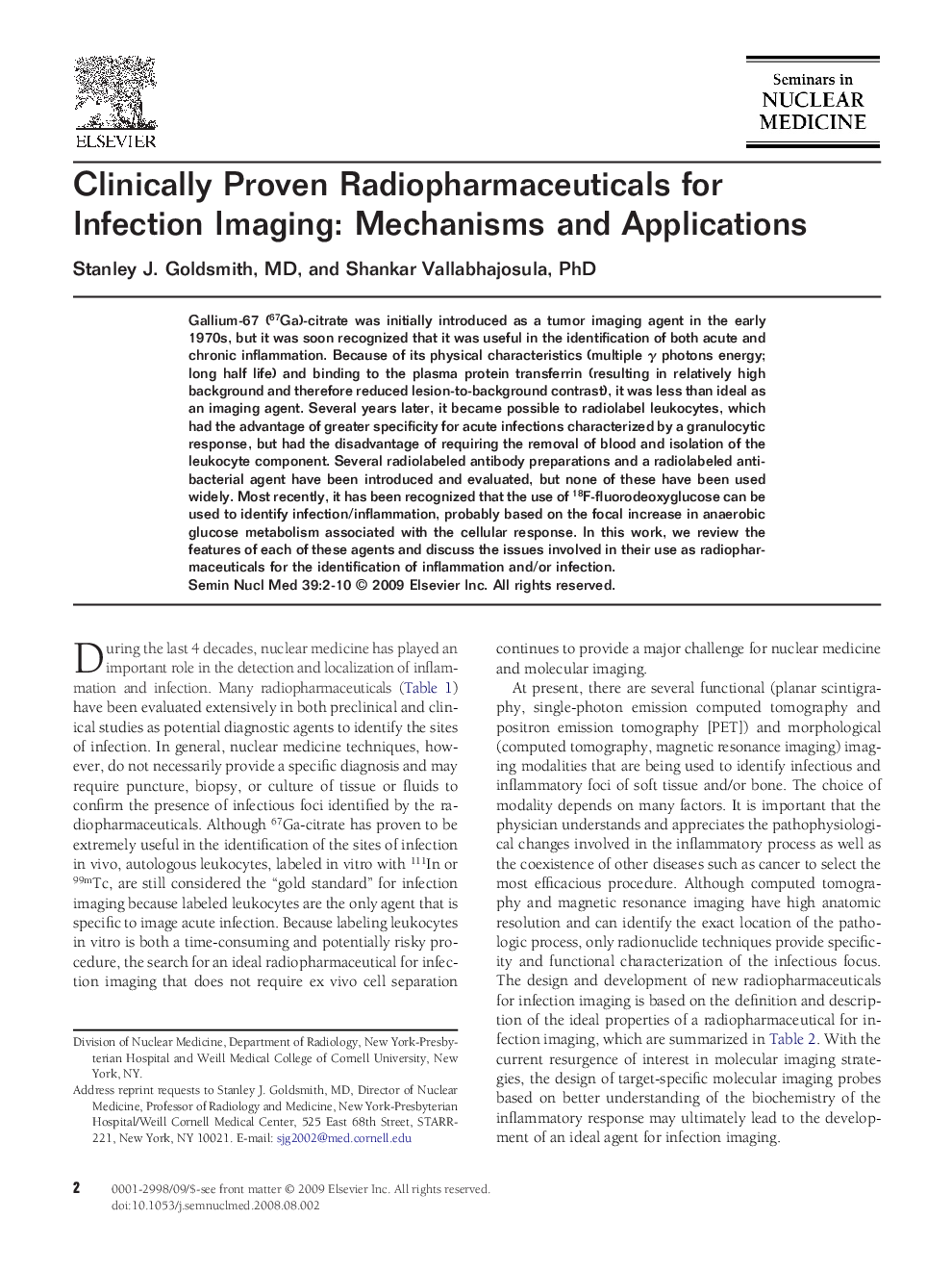| Article ID | Journal | Published Year | Pages | File Type |
|---|---|---|---|---|
| 4251397 | Seminars in Nuclear Medicine | 2009 | 9 Pages |
Gallium-67 (67Ga)-citrate was initially introduced as a tumor imaging agent in the early 1970s, but it was soon recognized that it was useful in the identification of both acute and chronic inflammation. Because of its physical characteristics (multiple γ photons energy; long half life) and binding to the plasma protein transferrin (resulting in relatively high background and therefore reduced lesion-to-background contrast), it was less than ideal as an imaging agent. Several years later, it became possible to radiolabel leukocytes, which had the advantage of greater specificity for acute infections characterized by a granulocytic response, but had the disadvantage of requiring the removal of blood and isolation of the leukocyte component. Several radiolabeled antibody preparations and a radiolabeled antibacterial agent have been introduced and evaluated, but none of these have been used widely. Most recently, it has been recognized that the use of 18F-fluorodeoxyglucose can be used to identify infection/inflammation, probably based on the focal increase in anaerobic glucose metabolism associated with the cellular response. In this work, we review the features of each of these agents and discuss the issues involved in their use as radiopharmaceuticals for the identification of inflammation and/or infection.
